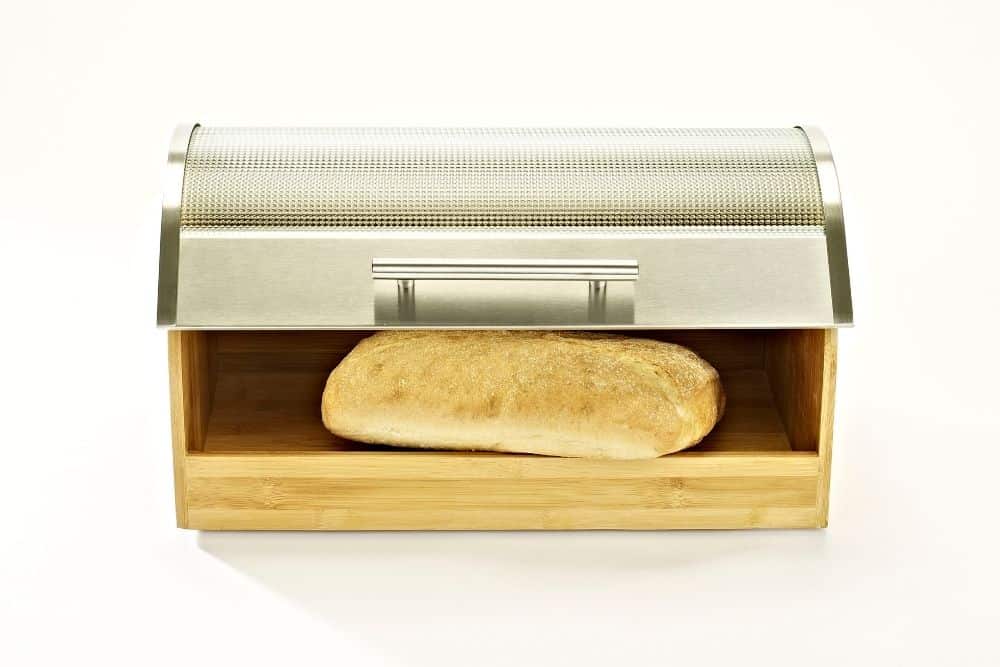
Who doesn’t love making homemade bread? The delicious odor it gives off in your kitchen when it is cooling off, the satisfaction of making it look, smell, and taste delicious. The praise from people who try it as they commend how much nicer it is than store-bought bread. You can’t go wrong.
However, there is a downfall. Homemade bread does not last as long as store-bought bread, and so unless you somehow intend on eating it all in just one sitting, you will need to find a way to store it that will lengthen its life.
Store bought bread is delicious, but thanks to the lack of preservatives it can go off pretty quickly. So, today, we will tell you how you can store your homemade bread, to get the best length of life out of it.
Table of Contents
The Storage of Your Homemade Bread
Homemade bread is wonderful, tasty, smells good, looks good, and is usually not that hard to make after a few tries. However, on the downside, homemade bread does not contain those extra preservatives that give store bought bread its extended life, so it is a war against time to get your bread while it is fresh.
There are a multitude of storage options that you can try out, see which works best for you.
Yet, we have found that kept in different storage packaging and containers, loaves of homemade bread will live different lifespans.
If you fancy trying out a plastic bag, it will still be fresh after a day, then there are other options such as keeping your bread in a bread box or a plastic storage box, however, these are less effective but still reduce the exposure to outside elements.
We highly recommend trying out a cotton bag, these seem to give it the longest life span, but let’s see how it all works.
The Best Ways
The best overall way to store homemade bread seems to be storing it in a cotton bag, this means poly cotton, they can be easy to buy, or if you are a bit crafty, you can make one yourself.
After three days, the bread should still be mostly soft, but it may have some dryness around the edges and exterior. After five days, mold will start to creep in. It is still not as long living as store bought bread, but it is better than how it would be otherwise.
This is the top choice, however, there are also plenty of other methods too. Let’s have a look at what other methods there are.

Use a Plastic Bag
Plastic bags can be very useful as a method. You can use either plastic wrap, or a plastic bag. Plastic does not allow for the passage of air, and it maintains the bead at a softer texture so that the load inside does not dry out.
Plastic is an option that can work for some of the softer bread types, but it is not as suitable for sourdoughs or other more crusty bread options, as it will make the plastic soggy from the moisture that is collecting inside.
While this is still a good choice, it is not as good as using a cotton bag.
Use Paper Wrapping/Bag
If you are on a budget, using a paper bag is very useful, it is cost-effective, simple, and eco-friendly. You should also wrap the bread in some linen or even just a tea-towel first, then package it in your paper bag. This best keeps it away from dry air and allows for some air circulation.
Perhaps the best idea would be to wrap it in a cotton bag first, then wrap that in a paper bag for the absolute best storage.
Bread Box
You can use a bread box, by this we mean those old-fashioned bread boxes where you can hide all your loaves away from the air.
The best material for this is metal, as the metal will help keep air out more effectively. However, the bread is still surrounded by the air inside the bread bin, so this way is not as effective as the other options, but it is still a choice.
Containers
If you have a plastic bread box, or just a plastic, lidded, storage container that your bread can fit into, this is a good idea. It is more effective than a metal bread box, and by three days the bread will be harder on the outside but still soft in the middle.
The biggest challenge here is getting hold of a container big enough for your bread to fit into.
Can I freeze it?
If there is absolutely no way you will be able to eat your load in just a day or two, then you can freeze your bread for more long term storage.
To do so it is best that you cool the bread off completely, then slice it, wrap it in plastic or zipper bags and then place it inside your freezer.
You can then take out slices as you need to and bring it to room temperature, or if you just want toast, toast it straight away, as this should be fine to do from frozen.
Why does homemade bread go bad so fast?
Two things will affect your homemade bread; how you store it, and how much air it is exposed to. If there is too much moisture loss, such as through absorption of a paper bag, or if there is too much air around it, as is with the bread box suggestion, then this causes the bread to dry out.
Bread stales due to science, a simple chemical reaction thanks to the high quantity of starch in the bread which will cause it to crystallize when it gets into contact with air. Drying it out, making it crunchy, and anything but the fluffy, moist loaf you backed up before.
Airtight containers are the best way to retain moisture, however you must be wary as warm and moist conditions provide the exact environment in which mold likes to grow. So, choose your storage options wisely. Our vote goes out to using a cotton bag.